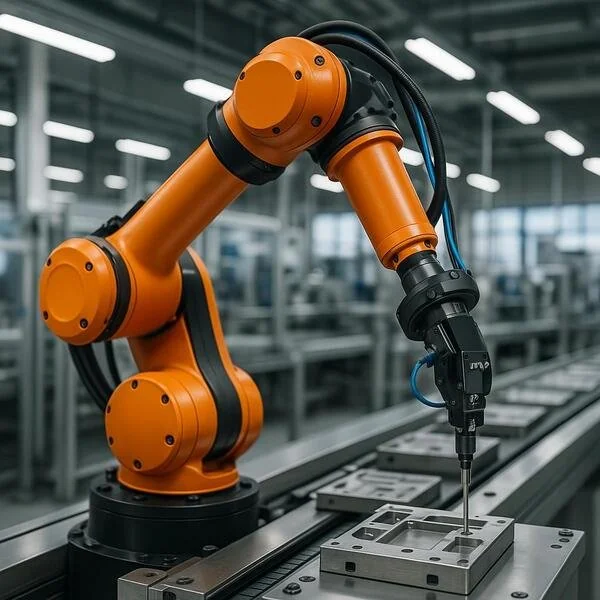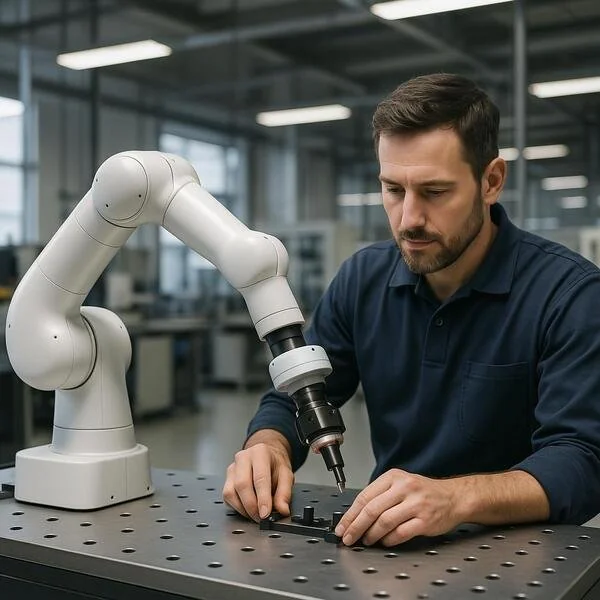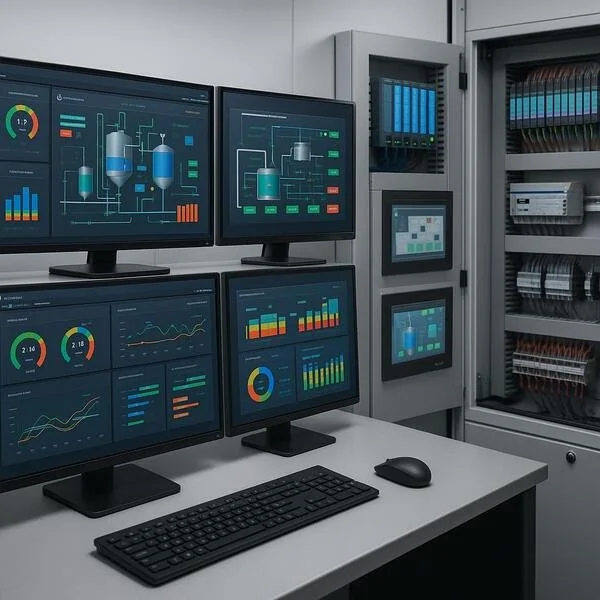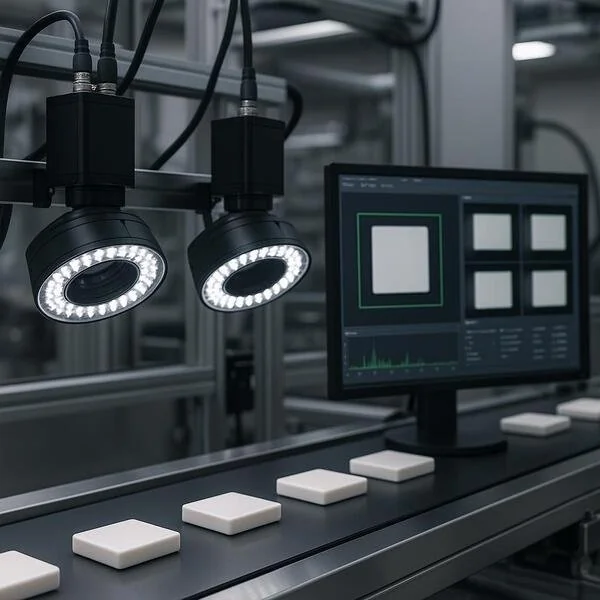¿Qué es la Automatización Industrial?
La automatización industrial es el uso de tecnologías de control, como ordenadores o robots, y sistemas de información para manejar diferentes procesos y maquinarias en una industria para reemplazar a los operadores humanos. Es la segunda etapa de la revolución industrial.
La automatización industrial permite:
- Aumentar la productividad y eficiencia de los procesos
- Reducir los costes operativos y de mano de obra
- Mejorar la calidad y consistencia de los productos
- Incrementar la seguridad en entornos de trabajo peligrosos
- Optimizar el uso de recursos y materias primas
Tipos de Automatización Industrial

Robots Industriales
Máquinas programables diseñadas para mover materiales, piezas, herramientas o dispositivos especializados a través de movimientos variables programados para la realización de tareas diversas.

Robots Colaborativos (Cobots)
Robots diseñados para trabajar junto a humanos en un espacio de trabajo compartido, colaborando directamente con los trabajadores sin las tradicionales vallas de seguridad.

Sistemas de Control
Dispositivos o conjuntos de dispositivos que gestionan, comandan, dirigen o regulan el comportamiento de otros dispositivos o sistemas.

Sistemas de Visión Artificial
Tecnología que permite a las máquinas "ver" y analizar imágenes o vídeos para tomar decisiones basadas en lo que "ven".
Beneficios de la Automatización Industrial
Mayor Productividad
Incremento de la capacidad de producción y reducción de tiempos de ciclo, permitiendo fabricar más productos en menos tiempo.
Reducción de Costes
Disminución de costes operativos, de mano de obra y de materiales gracias a la optimización de procesos y reducción de desperdicios.
Mejora de Calidad
Mayor consistencia y precisión en los productos, reduciendo defectos y rechazos, y aumentando la satisfacción del cliente.
Mayor Seguridad
Reducción de accidentes laborales al reemplazar a humanos en tareas peligrosas o en entornos de riesgo.
Sostenibilidad
Optimización del uso de recursos, reducción de desperdicios y menor consumo energético, contribuyendo a la sostenibilidad ambiental.
Flexibilidad
Capacidad para adaptarse rápidamente a cambios en la demanda o en los requisitos de producción, permitiendo una mayor personalización.
¿Cómo Implementar la Automatización Industrial?
Análisis de Necesidades
Identificación de procesos susceptibles de automatización y definición de objetivos específicos (reducción de costes, aumento de productividad, mejora de calidad, etc.).
Selección de Tecnología
Evaluación y selección de las soluciones tecnológicas más adecuadas para las necesidades específicas de la empresa (robots, sistemas de control, software, etc.).
Diseño e Integración
Diseño detallado de la solución y planificación de la integración con los sistemas existentes, considerando aspectos como la compatibilidad y la escalabilidad.
Implementación
Instalación, configuración y puesta en marcha de los sistemas de automatización, incluyendo pruebas y ajustes necesarios.
Formación
Capacitación del personal para operar, mantener y sacar el máximo provecho de los nuevos sistemas automatizados.
Monitorización y Mejora Continua
Seguimiento del rendimiento de los sistemas automatizados e implementación de mejoras continuas para optimizar su funcionamiento.